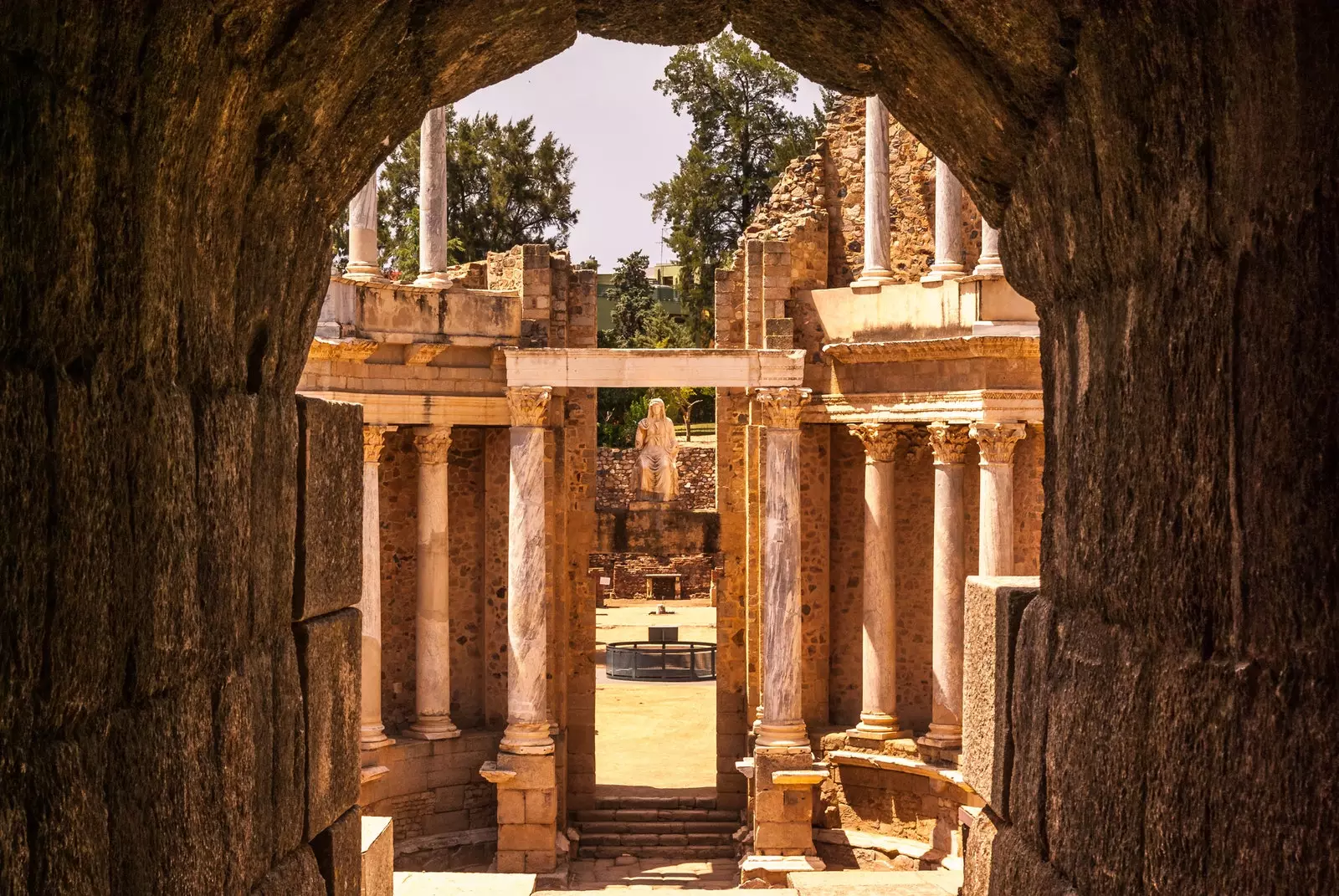
Mérida: the refuge of the past
The Iberian sun seems to divide into three when it illuminates the peninsula in the shape of a bull's skin. In the Levant, when it reflects its rays in the Mediterranean, it gives off a clear and vivid light that spreads along the shores of the ancient “Roman sea”. The same one that inspired painters like Van Gogh in Provence, Sorolla in Valencia, and the great Italian artists.
In turn, when Heros warms the wide horizon of the Castilian plateau, he seems to dress in white, intermingling its rays with the morning mists that make up the banks of the Duero, the Carrión and the Eresma; it seems as if, before the rough immensity of the plain, the star wanted to show itself pure and radiant, like a child dressed for communion.
A crystalline appearance that, however, the Iberian sun forgets when it should illuminate the southern lands, whose border is the Tagus River, and its end, the wide Atlantic. This third sun, cheeky and haughty, that heats the granite from Extremadura and the lime from Andalusia to the point of turning them into braziers, is the one that illuminates Mérida, its columns, squares, porticos and arches, prompting us to discover a brilliant past under its rays.
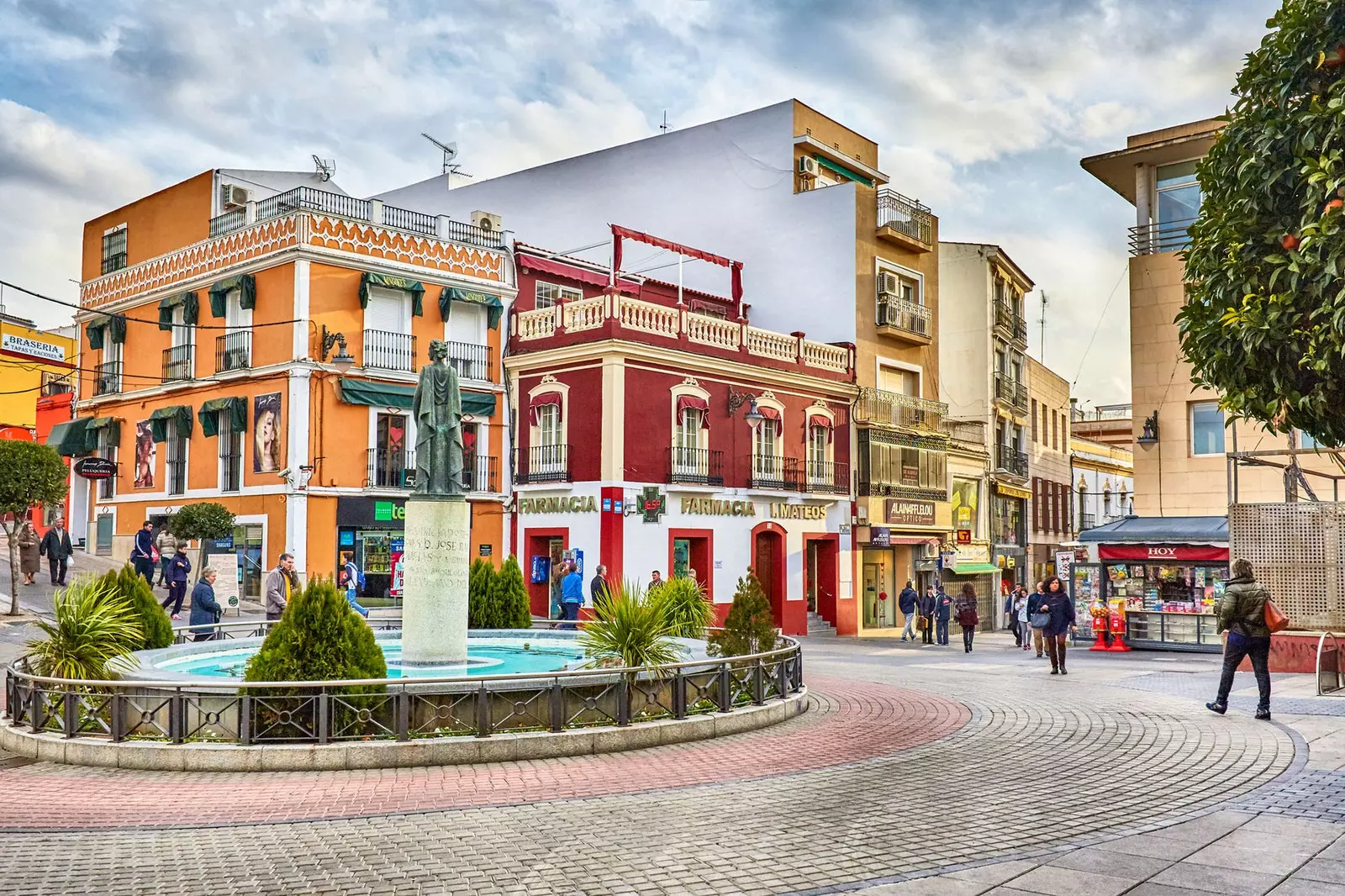
Walking through Merida
The presence of this benign sun was undoubtedly one of the reasons why the emperor Augustus decided to found, on the banks of the Guadiana river, the city I am talking about today.
The first emperor of Rome had a delicate task ahead of him: after the Asturian-Cantabrian wars against the indomitable peoples that inhabited the Cantabrian Mountains, Octavio's wish was none other than to provide his legionnaires, fed up with the rains, the cold and the mud of humid Spain, a place where they could rest, prosper, and spread the power of Rome in Hispania.
The Roman engineers, creators of works that are still overwhelming today, advised the emperor to install his veterans on a hill, on the banks of the Guadiana river, surrounded by fertile plains, very similar to those cultivated by the legionnaires in Italy, in the very center of what was then the Roman province of Lusitania.
This location, moreover, was next to the path that, since pre-Roman times, connected the Galician mountains with the lands south of the Duero: the Silver Way.
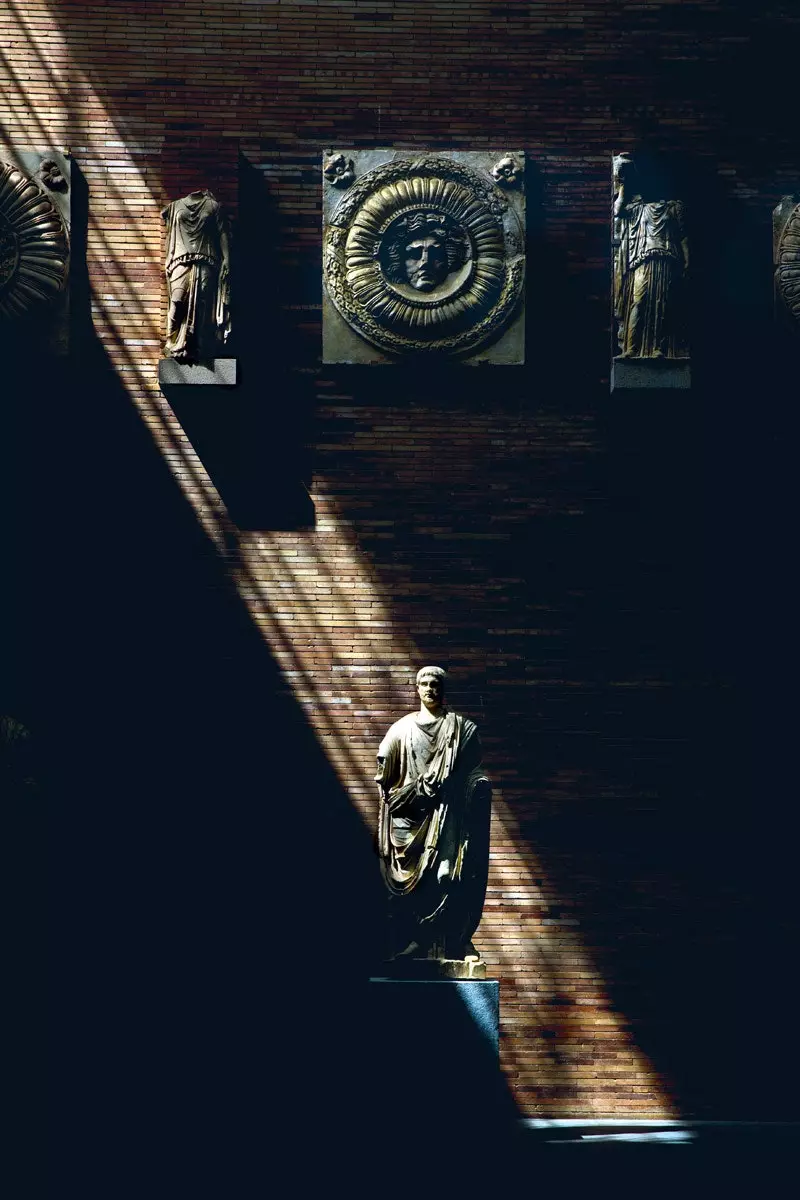
The Museum of Roman Art in Mérida
Thus, like a kind of nursing home tailored to the legionnaires, Mérida was born, Emerita Augusta, "the city of the emeritus", founded in the year 25 a. C to guarantee the happy retirement of the veterans of the conquest of Hispania.
Mérida soon acquired a very important relevance in the Roman imperial organization chart. As the capital of the province of Lusitania, it was endowed with all the public buildings that the Latins considered essential: large forums with arcaded spaces and temples where to worship Rome and the emperor, as well as a circus, theater and amphitheater to the delight of the people.
The city was organized according to the canon of Roman cities, with its cardo and decumanus dividing the city in four, a layout that remains today.
Walking along the street of Santa Eulalia from the Villa gate to the Roman Bridge, we will find ourselves stepping on the slabs that once supported hundreds of caligae.
The old decumanus, which ran through the city from east to west, It is today one of the most lively and commercial streets of the capital of Extremadura, although to appreciate its monuments you have to make your way through houses with low ceilings and whitewashed walls.
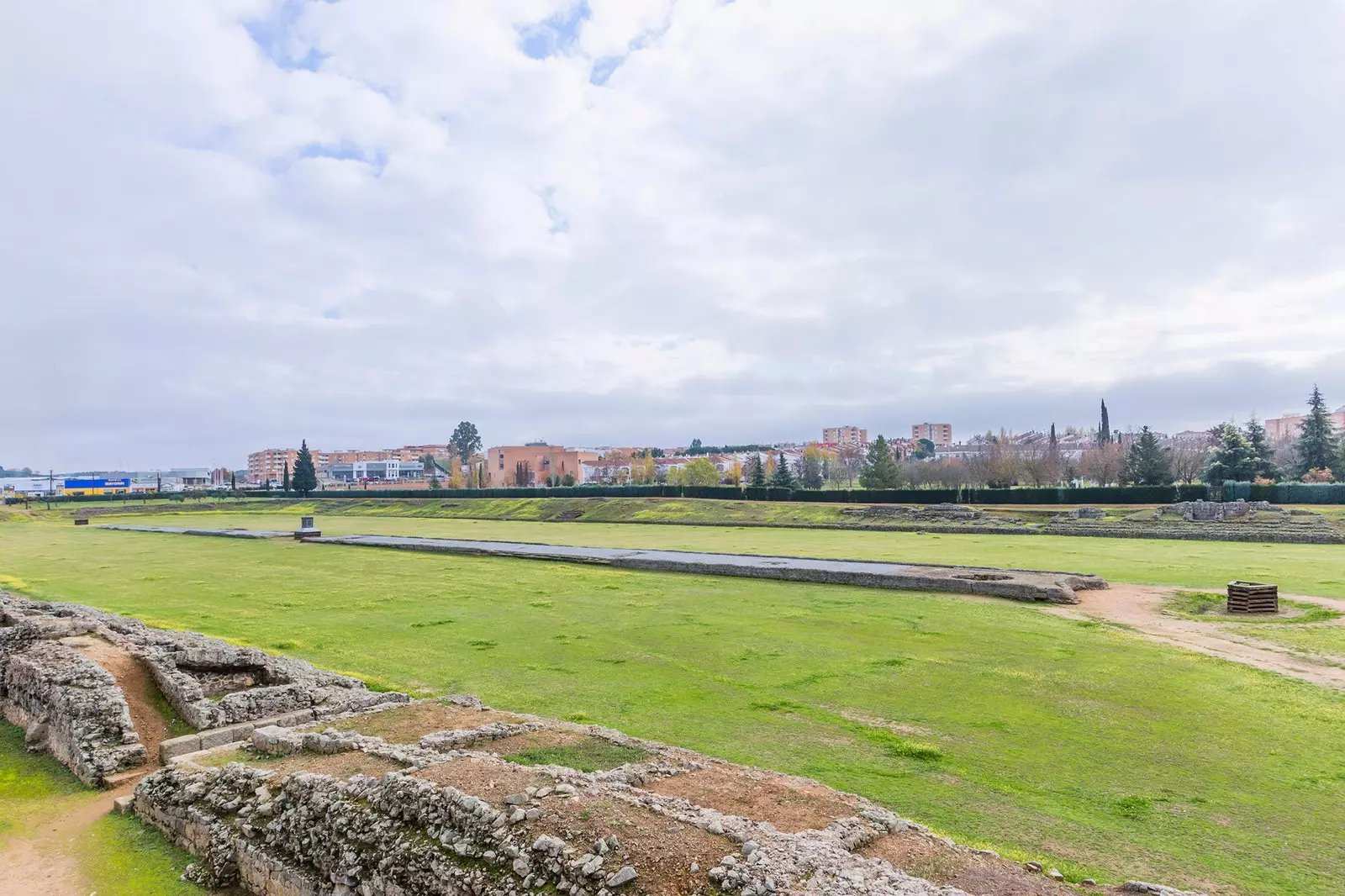
The Roman Circus is excellently preserved
Thus, unexpectedly, after an alley that starts from Santa Eulalia street, a towering temple appears, supported by large worn granite stones, whose Corinthian columns support a stark frieze: is the temple of Diana, one of the most beautiful examples of Roman architecture in Spain.
The wide square that embraces the building has been reformed, perhaps with too much contemporary taste, so that the temple is the only protagonist.
However, the excellent migas of the Catalina restaurant, located in front of the building, give fair competition to the work of the Romans: It is worth tasting them sitting in front of the temple, dwelling on its details, and envying the Renaissance nobleman who decided to build his palace on the ruins of such a beautiful monument.
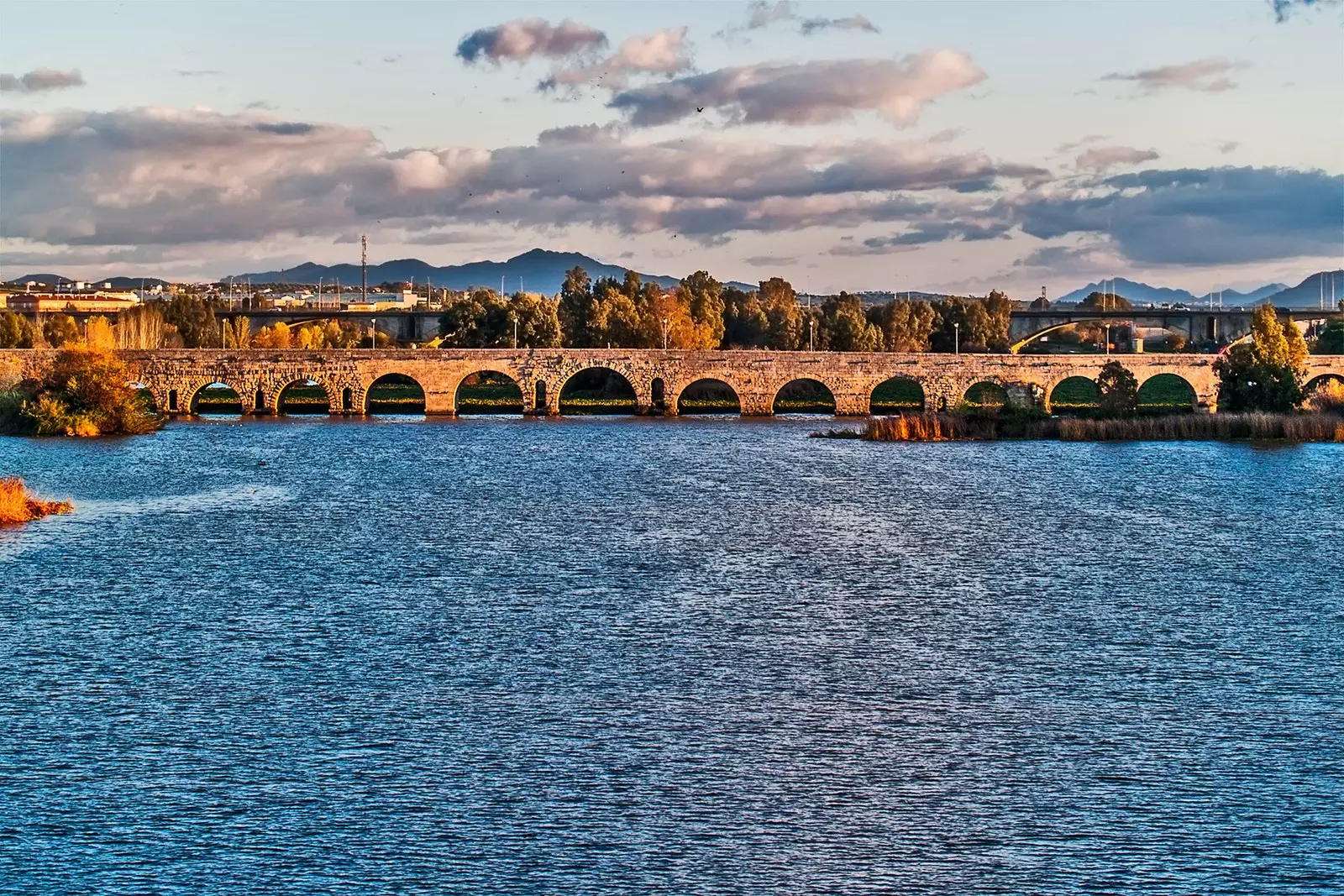
Roman bridge over the Guadiana river
From the temple of Diana, epicenter of the city, we can choose between two paths. The one that follows Sagasta street slightly uphill will lead us to the ruins of the provincial forum of the Roman city, much more modest than the neighboring temple, and will allow you to appreciate Extremaduran civil architecture typical of modern times.
White houses with tile motifs, whitewashed with pastel colors ranging from yellow to blue, and on whose facades there are no shortage of balconies from which bougainvilleas hang, will watch our way to the doors of the Roman theatre.
There, sitting in the stands, admiring the statues and marble columns that give the scene a dazzling appearance, Stendhal may appear to us: They say that between these stones you can hear an ancient silence that years of tourist crowds had completely covered.
Now, however, you can hear, from the stands, the song of the birds. You always have to know how to look the positive side of these atypical and strange “new times”.
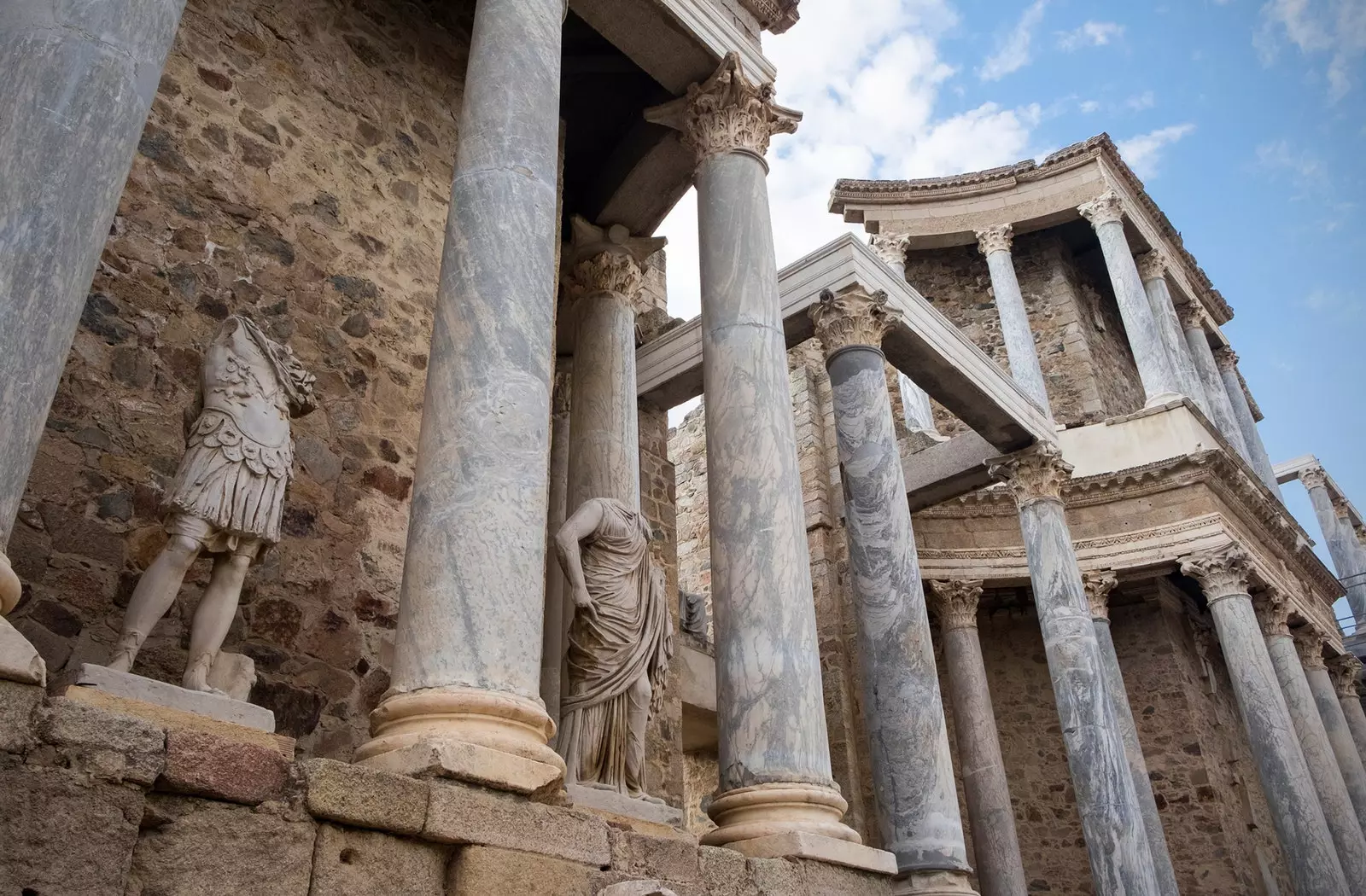
Roman theater of Merida
Another itinerary with an identical Roman aroma starts from the temple of Diana, and descending towards the river, look for the breadth of the Plaza de España and the massive walls of the Alcazaba.
There is much insistence, and rightly so, on Mérida's Roman past, but the remains of the peoples that succeeded the Latins is as important as the work of their founders.
The Visigoths, heirs to the imperial authority, made Emerita one of their capitals, adorning it and maintaining its powerful appearance, aware of the adoration that Hispanics showed towards the city and its patron saint, Saint Eulalia.
The saint from Mérida, martyred in the city in the time of Emperor Diocletian, attracted thousands of Christian pilgrims to her mausoleum, who, During the centuries of Visigoth rule, they made the figure of Santa Eulalia a kind of "patron saint of Hispania".
The basilica that kept her relics was one of the largest temples on the peninsula, ruined after the Arab conquest and recovered with the arrival of the Leonese kings four centuries later.
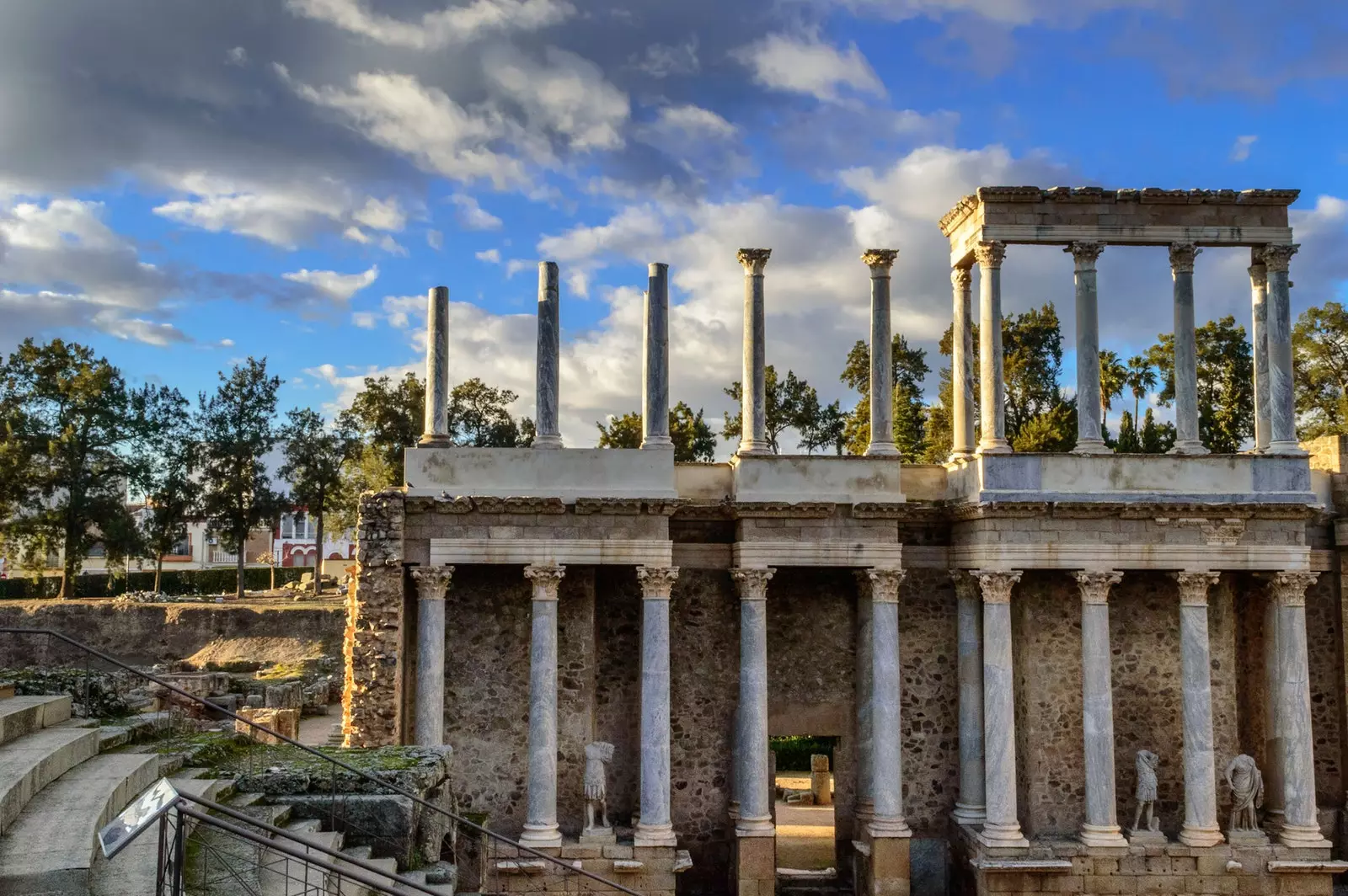
Mérida or a trip to the times of Rome
At half past seven the bell tolls, and dozens of people from Mérida head towards the Basilica of Santa Eulalia as their ancestors did for centuries. They go to mass dressed with provincial elegance, the one that is shown in the evening walks under the poplar groves throughout Spain, and that, little by little, displaced by the boring aesthetic canons of our time, it is being lost.
In Mérida, the ruins are not the only ones that show that the city clings to the past. Walking through its streets you can hear the call of the sharpener, the old punk of a local hidden in a basement, and the races of the children who play "cops and robbers".
Even the language seems to have been paralyzed: "your children are chinchorreros!" , releases an Extremaduran mother who speaks through voice notes while she walks over the arches of the Roman Bridge, postponing the colloquial language that we all seem to have forgotten.
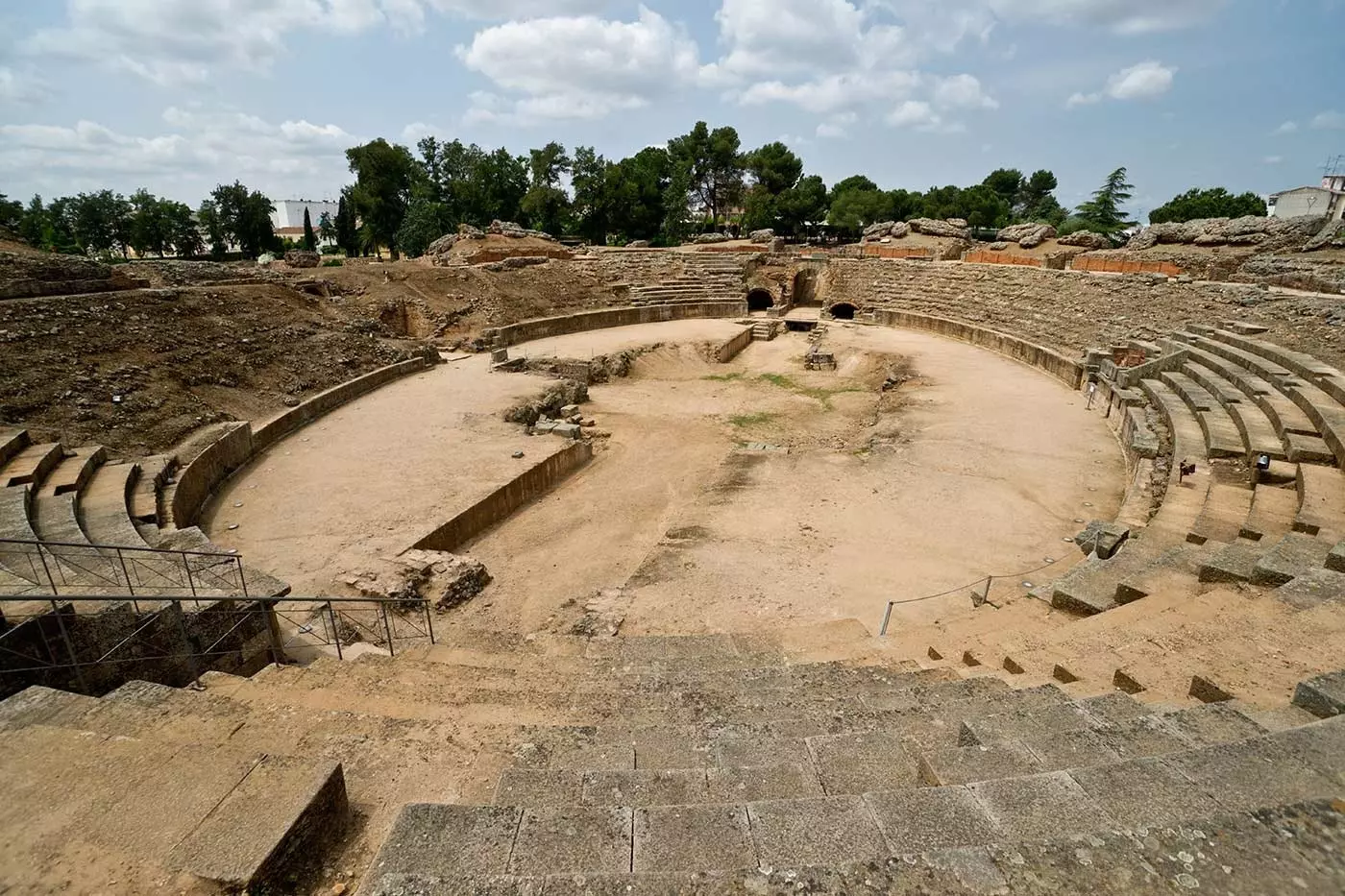
Roman amphitheater of Merida
And in a corner, leaning against a Roman cement wall, a heavy like those of yesteryear, with a metal chain and a leather jacket, hurrying down the puffs of his cigarette.
Perhaps Mérida is the last refuge of the urban tribes that one day populated Spain just like the Romans did. Of course, no place seems more suitable than Emerita Augusta, the "city of veterans", to hide from the passage of time.
Here, fashions survive for millennia, and as much as times go by, and countries change hands, The residents of Mérida will continue to come to pray before Santa Eulalia, as her grandparents did.
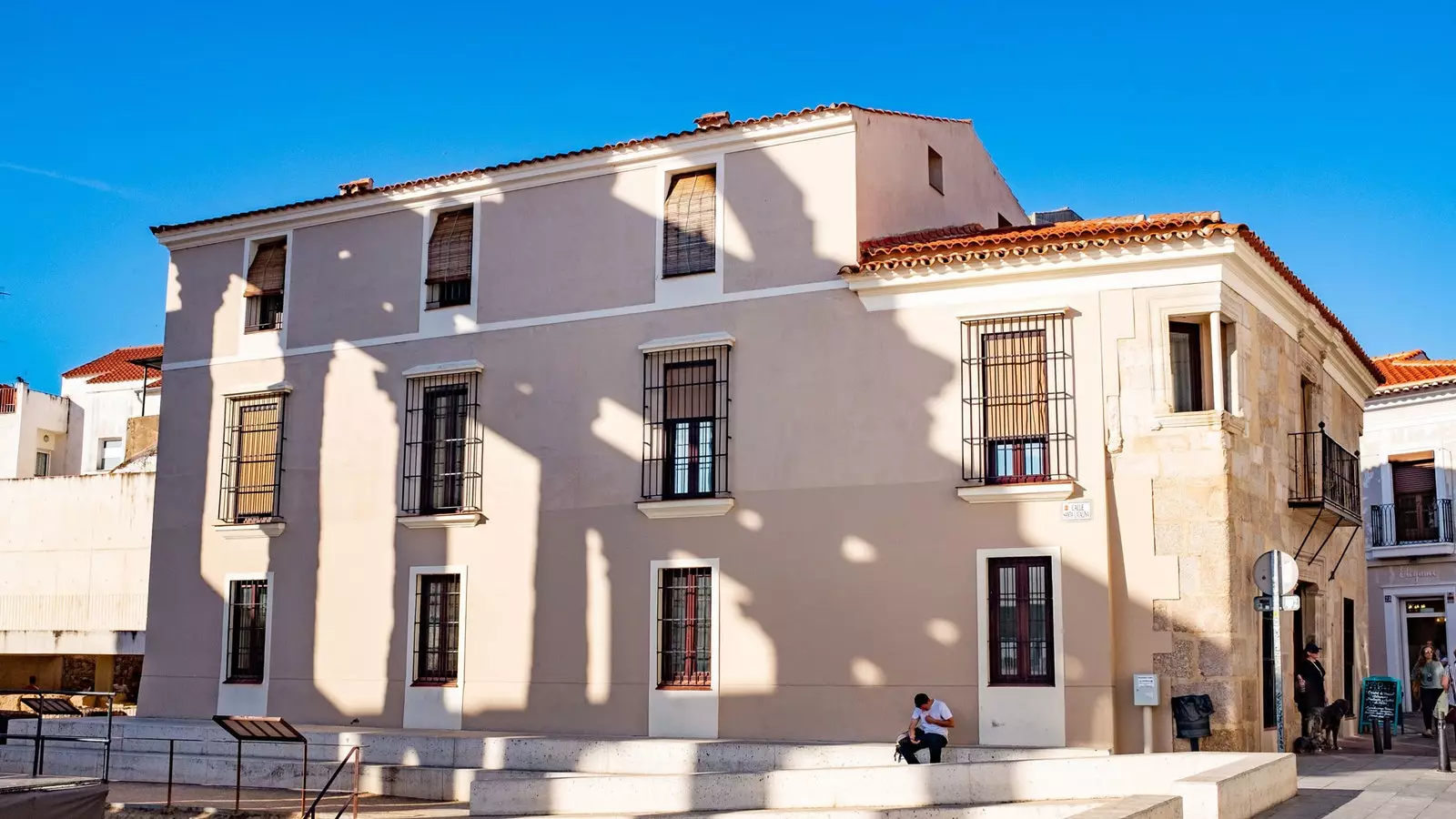
Mérida, the refuge of the past
Next to the Guadiana, everything is cooked over a slow fire, and served in a clay pot as a tapa for pestorejo: Merida, despite being more than two thousand years old, is the city where a secret can still be kept.
